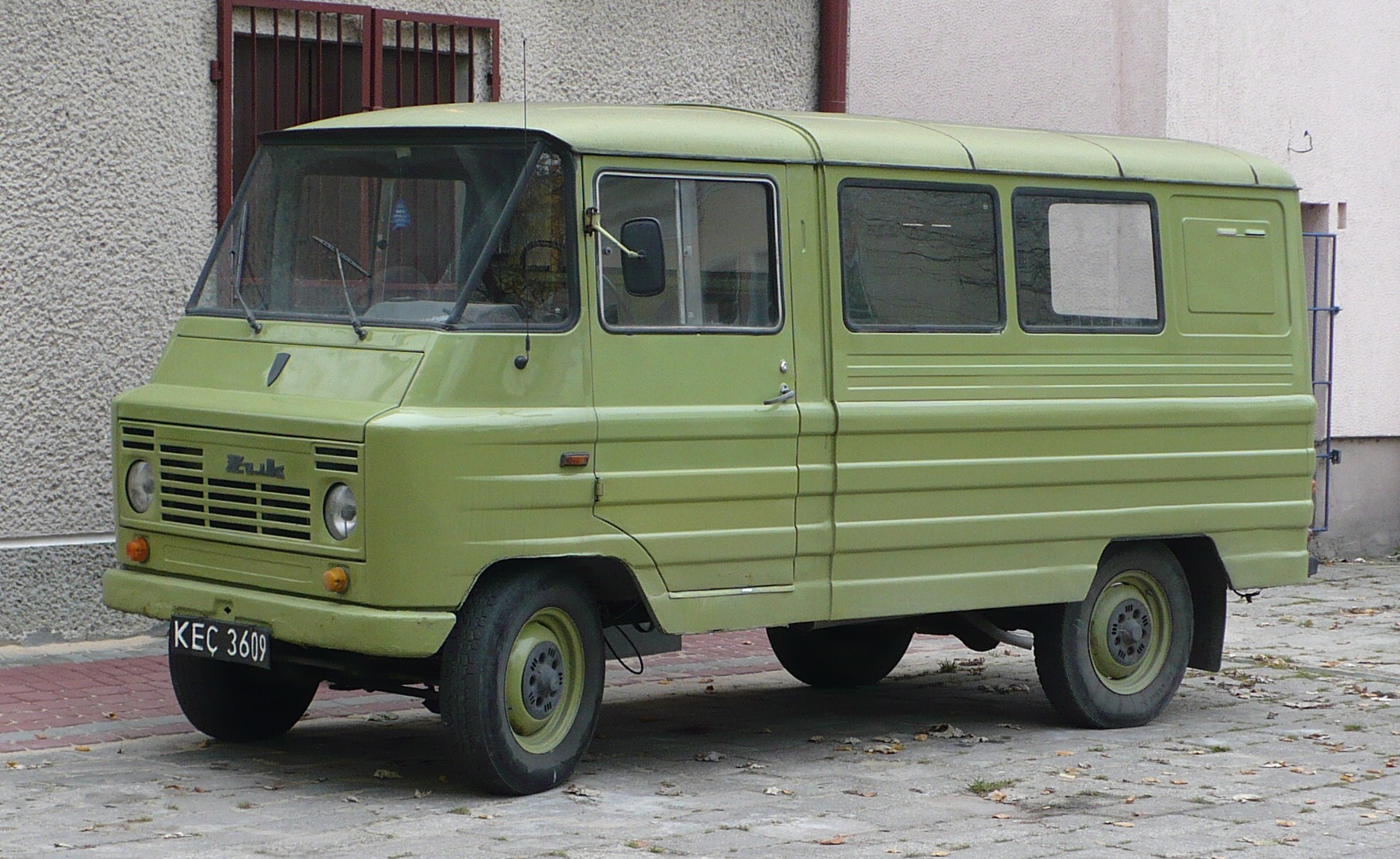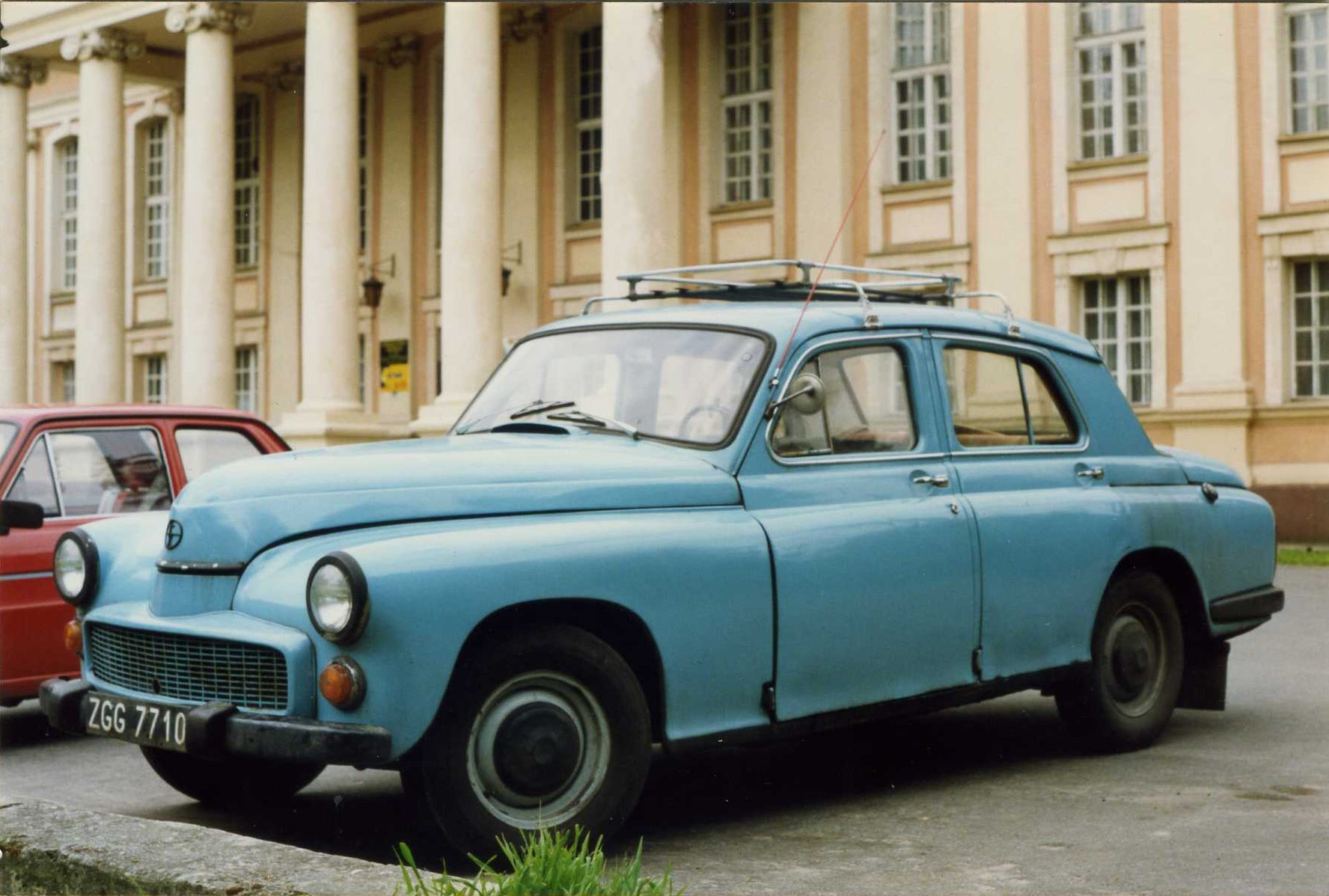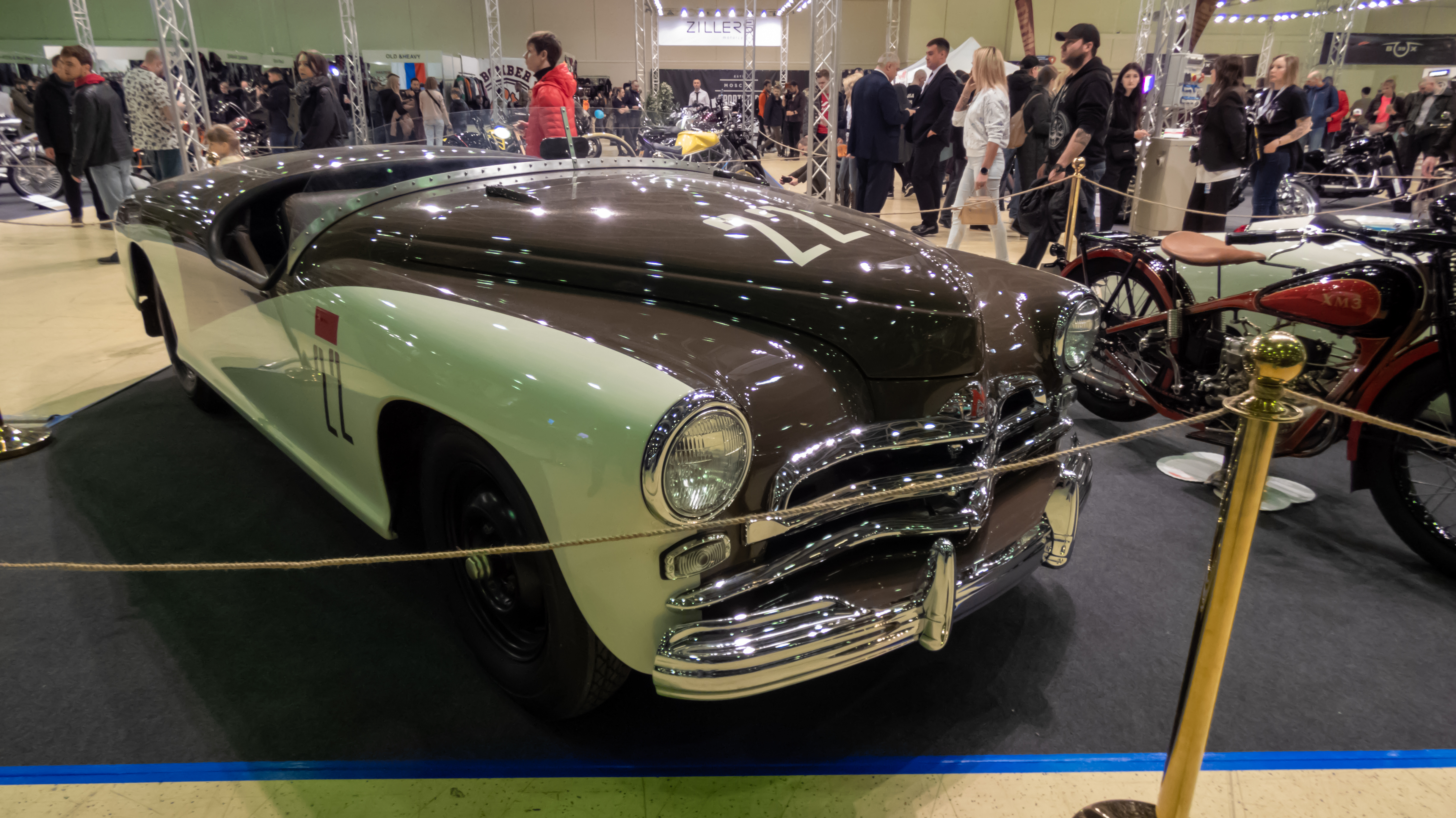|
FSC Żuk
The Żuk ( pl. ''beetle'') was a van and light truck produced in Lublin, Poland, between 1958 and 1998 by FSC. It was based on FSO Warszawa, which in turn was licensed from the Soviet passenger car GAZ-M20 Pobeda. The chassis, suspension and engine from FSO Warszawa formed the basis of the Żuk and the Nysa light vans designed in the late 1950s. About were manufactured. The Żuk was mainly sold to state organizations, but also to individuals. After 1989, with the liberalization of the Polish economy, the Żuk was able to maintain sales to the traditional markets and expand the number sold to individual consumers. The final few years of production was in parallel to its successor, the Lublin van, as a cheaper alternative. The Żuk came in a range of body styles. The most common were van and light 1.1-ton pickup truck. Rarer variants were minibus and a long-cab truck. Rare for a van, it had independent front suspension. It was very angular, with a number of wide channels runni ... [...More Info...] [...Related Items...] OR: [Wikipedia] [Google] [Baidu] |
Żuk A15 Kraków Dworzec Główny, 2014-05-18
Zhuk (Cyrillic: Жук), Žuk, or Żuk (Polish), means ''beetle'' in Slavic languages. It may refer to: * Zhuk (surname) *Zhuk class patrol boat, Soviet and Russian patrol boat manufactured from 1970 to 1996 *Zhuk radar, family of Russian airborne radars developed by NIIR Phazotron for multi-role combat aircraft such as the MiG-29 and the Su-27 *FSC Żuk The Żuk ( pl. ''beetle'') was a van and light truck produced in Lublin, Poland, between 1958 and 1998 by FSC. It was based on FSO Warszawa, which in turn was licensed from the Soviet passenger car GAZ-M20 Pobeda. The chassis, suspension and ..., a van and light truck produced in Lublin, Poland * Żuk Nowy, a village in Poland * Żuk Stary, a village in Poland * BŻ-4 Żuk, a Polish helicopter See also * * Zuk (other) {{Disambiguation, geo ... [...More Info...] [...Related Items...] OR: [Wikipedia] [Google] [Baidu] |
Zuk P1000094
Zuk may refer to: * Zuk (surname) * Zuk, Iran, a village in Iran *FSC Żuk, a Polish motor vehicle *ZUK Mobile ZUK Mobile was a Chinese smartphone company founded in May 2015, and a subsidiary of Lenovo. It was headquartered in Beijing. The brand ceased operations in 2017, when Lenovo shifted its smartphone focus to Motorola. History ZUK Mobile was foun ..., a smartphone company owned by Chinese technology company Lenovo See also * * Zhuk (other) {{disambiguation ... [...More Info...] [...Related Items...] OR: [Wikipedia] [Google] [Baidu] |
Kunmadaras Motorsport 2021
Kunmadaras is a large village in Jász-Nagykun-Szolnok, Hungary. History The first written record of the existence of the village is from 1393. According to it the area was given to György Madaras, after whom the village was named, by the Holy Roman Emperor, Sigismund, the king of Hungary. During the Ottoman occupation the village was destroyed. In the 18th and 19th centuries the population began to increase again, and new houses and buildings were constructed. In 1811 it became a market town. In 1944 the German army had a military airfield built at the edge of the village. During the Soviet invasion of Hungary in 1944 the Soviet air force took over the airfield. Jewish pogrom In 1946 there was a violent attack on Jewish Holocaust survivors (the Kunmadaras pogrom) inspired by a rumour that they were murdering and consuming ("making sausages out of") children. Two Jews were killed and fifteen were injured. Military role in the socialist period Between 1956 and 1991 Sov ... [...More Info...] [...Related Items...] OR: [Wikipedia] [Google] [Baidu] |
Polish Language
Polish (Polish: ''język polski'', , ''polszczyzna'' or simply ''polski'', ) is a West Slavic language of the Lechitic group written in the Latin script. It is spoken primarily in Poland and serves as the native language of the Poles. In addition to being the official language of Poland, it is also used by the Polish diaspora. There are over 50 million Polish speakers around the world. It ranks as the sixth most-spoken among languages of the European Union. Polish is subdivided into regional dialects and maintains strict T–V distinction pronouns, honorifics, and various forms of formalities when addressing individuals. The traditional 32-letter Polish alphabet has nine additions (''ą'', ''ć'', ''ę'', ''ł'', ''ń'', ''ó'', ''ś'', ''ź'', ''ż'') to the letters of the basic 26-letter Latin alphabet, while removing three (x, q, v). Those three letters are at times included in an extended 35-letter alphabet, although they are not used in native words. The traditional ... [...More Info...] [...Related Items...] OR: [Wikipedia] [Google] [Baidu] |
Beetle
Beetles are insects that form the order Coleoptera (), in the superorder Endopterygota. Their front pair of wings are hardened into wing-cases, elytra, distinguishing them from most other insects. The Coleoptera, with about 400,000 described species, is the largest of all orders, constituting almost 40% of described insects and 25% of all known animal life-forms; new species are discovered frequently, with estimates suggesting that there are between 0.9 and 2.1 million total species. Found in almost every habitat except the sea and the polar regions, they interact with their ecosystems in several ways: beetles often feed on plants and fungi, break down animal and plant debris, and eat other invertebrates. Some species are serious agricultural pests, such as the Colorado potato beetle, while others such as Coccinellidae (ladybirds or ladybugs) eat aphids, scale insects, thrips, and other plant-sucking insects that damage crops. Beetles typically have a particularly hard e ... [...More Info...] [...Related Items...] OR: [Wikipedia] [Google] [Baidu] |
Lublin
Lublin is the ninth-largest city in Poland and the second-largest city of historical Lesser Poland. It is the capital and the center of Lublin Voivodeship with a population of 336,339 (December 2021). Lublin is the largest Polish city east of the Vistula River and is about to the southeast of Warsaw by road. One of the events that greatly contributed to the city's development was the Polish-Lithuanian Union of Krewo in 1385. Lublin thrived as a centre of trade and commerce due to its strategic location on the route between Vilnius and Kraków; the inhabitants had the privilege of free trade in the Grand Duchy of Lithuania. The Lublin Parliament session of 1569 led to the creation of a real union between the Crown of the Kingdom of Poland and the Grand Duchy of Lithuania, thus creating the Polish–Lithuanian Commonwealth. Lublin witnessed the early stages of Reformation in the 16th century. A Calvinist congregation was founded and groups of radical Arians appeared in the city ... [...More Info...] [...Related Items...] OR: [Wikipedia] [Google] [Baidu] |
Poland
Poland, officially the Republic of Poland, is a country in Central Europe. It is divided into 16 administrative provinces called voivodeships, covering an area of . Poland has a population of over 38 million and is the fifth-most populous member state of the European Union. Warsaw is the nation's capital and largest metropolis. Other major cities include Kraków, Wrocław, Łódź, Poznań, Gdańsk, and Szczecin. Poland has a temperate transitional climate and its territory traverses the Central European Plain, extending from Baltic Sea in the north to Sudeten and Carpathian Mountains in the south. The longest Polish river is the Vistula, and Poland's highest point is Mount Rysy, situated in the Tatra mountain range of the Carpathians. The country is bordered by Lithuania and Russia to the northeast, Belarus and Ukraine to the east, Slovakia and the Czech Republic to the south, and Germany to the west. It also shares maritime boundaries with Denmark and Sweden. ... [...More Info...] [...Related Items...] OR: [Wikipedia] [Google] [Baidu] |
Fabryka Samochodów Ciężarowych
The FSC Lublin Automotive Factory ( pl, Fabryka Samochodów Ciężarowych) commonly known as FSC, is a large motor vehicle factory in Poland established while the country was part of the Soviet Bloc. It was founded in 1950. The first vehicle left its assembly line on November 7, 1951. The factory was built on an open field in Lublin from the grounds up, to first produce light trucks and later vans, as well as vehicles for the military. History After the 1989 collapse of the communist system in Poland, and the establishment of a free market economy, the state-owned FSC factory began to establish links with companies outside Poland. In 1995 the factory entered a joint venture with the South Korean conglomerate Daewoo. It soon become a part of the new company Daewoo Motor Polska. In December 1995 the factory started assembling Daewoo Nexia passenger cars. Around 40,000 were produced before production ended in 1998. Daewoo also began a joint project with British manufacturer LDV ... [...More Info...] [...Related Items...] OR: [Wikipedia] [Google] [Baidu] |
FSO Warszawa
:''Sections of this article are translated from Polish Wikipedia''. FSO Warszawa (from Polish: ''Warsaw'') was an automobile manufactured in FSO factory in Warsaw, Poland between 1951–1973, based on GAZ-M20 Pobeda. The Warszawa was the first newly designed car built in Poland after the World War II. Warszawas were popular as taxis because of their sturdiness and ruggedness. However, they were underpowered for their weight and had high fuel consumption. In total, 254,471 cars were made. Description Original M20 model Named after the city of Warsaw, the Warszawa was until 1957 identical to the Soviet Pobeda, built under license, which was given to Poland by GAZ at Joseph Stalin's insistence. Exports of the car started in 1954 to countries such as Romania, China, Bulgaria and Albania. In 1956 work began on the development of a new four-speed gearbox. However, it failed in practice and its development was suspended. In the same year, work began on an overhead valve engine that coul ... [...More Info...] [...Related Items...] OR: [Wikipedia] [Google] [Baidu] |
GAZ-M20 Pobeda
The GAZ-M20 "Pobeda" (russian: ГАЗ-М20 Победа; ''победа'' means ''victory'') was a passenger car produced in the Soviet Union by GAZ from 1946 until 1958. It was also licensed to the Polish Passenger Automobile Factory and produced as the FSO Warszawa. Although usually known as the GAZ-M20, an original car's designation at that time was just M-20: M for "Molotovets" (the GAZ factory was named after Vyacheslav Molotov). History The first sketches of similar-looking cars were completed by Valentin Brodsky in 1938 and by Vladimir Aryamov in 1940, which revealed a growing tendency towards streamlined car design in the Soviet Union. Aryamov's two-door coupe GAZ-11-80, designed in 1940, greatly resembled the later Pobeda and was in many ways identical to it. However, after the German invasion of 1941 military priorities delayed the work on the new car and the factory was switched to military production. The first Pobeda was developed in the Soviet Union under chief engin ... [...More Info...] [...Related Items...] OR: [Wikipedia] [Google] [Baidu] |
Nysa (van)
The Nysa van was produced in the town of Nysa, Poland, from 1958 until 1994. The Nysa was based on the same chassis as the angular shaped FSC Żuk, Żuk van, but had rounded body lines, especially the two-part rounded windshield, and was considered more comfortable and a better fit for carrying people. The basic body variant was a universal van, for cargo or persons, with sliding doors on the right or conventional doors (marked with a letter T - ). At the rear, most variants had a single door opening to the left side. A few variants existed: a cargo van (letter F - ), a minibus (letter M) and an ambulance (letter S), and some others. A rare variant was made in the form of a light truck. At the time, the Nysa was practically the only van-size ambulance used in Poland. Many vans were sold to the Milicja Obywatelska, Militia, which was the only form of police during the Communist era in Poland; blue Nysa vans became a kind of "trademark" of the Militia (Militia variants had slide doo ... [...More Info...] [...Related Items...] OR: [Wikipedia] [Google] [Baidu] |
Lublin Van
The FSC Lublin was a light commercial van produced by the Polish automaker FSC in Lublin. Production started in 1993, and was intended to replace the aging Żuk, which was finally discontinued in 1998. The van, known as ''Lublin 33'' was produced until 1995, when Daewoo Motors took control of FSC and renamed it as ''Lublin II''. In 1999 the ''Lublin III'' was put into production. After the Daewoo Group bankruptcy, the future of the ''Lublin'' brand looked bleak. In 2001 the brand ''Lublin'' was sold to a British company, '' Truck Alliance''. Later the brand was owned by Intrall Polska, a Russo-British company, and the van was sold under the name ''Intrall Lublin''. Later the rights to the model were acquired by DZT Tymińscy, which manufactured a small batch of them under Pasagon with the modernized frame and slight changes to the front of the vehicle, made to accommodate a larger engine meeting Euro 5 standards. Later they tried to sell it again under the name of Honke ... [...More Info...] [...Related Items...] OR: [Wikipedia] [Google] [Baidu] |



